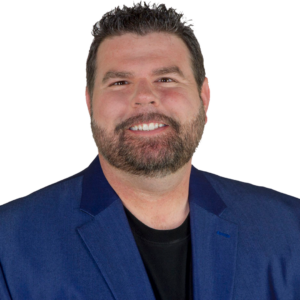Project Survival 101: Managing refurbs and expansions
Expansions and renovations are a necessary part of life at continuing care retirement communities (CCRCs), but handling them properly can make all the difference. Long-Term Living’s Editor-in-Chief Pamela Tabar spoke with key members of a major, four-year renovation/new construction project about building toward the future without destroying the current business—or driving the current residents out the door.
Laclede Groves, a Lutheran Senior Services CCRC, has been operating on its 65-acre campus in St. Louis, Mo., since 1972. The hallmark building on the site is a repurposed 1920s convent, complete with a stunning vault-arch chapel. But Laclede’s housing environments and service lines needed major overhauls, despite the fact that the CCRC was still enjoying a near-full occupancy rate.
The site’s skilled nursing (SNF) section, housed in the old convent, was still “ward-based,” with narrow, institutional corridors and shared rooms—worlds away from the person-centered care model predominant today. The project team also wanted to rethink the site’s assisted living units, add memory care beds and therapy spaces and expand with a new independent living structure—all actions that Laclede’s executives believed were necessary to keep the CCRC marketable within the greater community. Despite the many business drivers contributing to why the campus needed major changes, the project needed to be sensitive to the 700 residents who already lived there.
Four years later, Laclede had built 80 new independent living apartments and an underground parking garage, added 45 new memory care beds, created several new dining venues and had completely renovated the old convent SNF space using a neighborhood model while also adding rehab/therapy spaces as an expanding business segment.
In the following roundtable discussion, Laclede Executive Director Valerie Cooper, Lutheran Senior Services CFO Paul Ogier and Dan Cinelli, FAIA, principal and executive director at the design firm Perkins Eastman, describe how they got the overhaul done and what lessons they learned along the way.
THE CHALLENGES
Laclede’s executives realized that accomplishing the primary goals of new independent living and new memory care spaces—not to mention a complete overhaul of the SNF wing—would impact the entire campus. Hiring an architect is one step, but managing a project like this can be another matter.
 Valerie Cooper: We had an amazing reputation that kept us full. But we very much had a community siloed by levels of care. We had our independent living residents and the residential care and the skilled nursing, but community crossovers didn’t happen very often. We worked hard to create a sense of community.
Valerie Cooper: We had an amazing reputation that kept us full. But we very much had a community siloed by levels of care. We had our independent living residents and the residential care and the skilled nursing, but community crossovers didn’t happen very often. We worked hard to create a sense of community.
 Paul Ogier: We were content with [our site] back then, but when we look back now, it was pretty horrible. It was a thoroughfare with no privacy in the care center. To get anywhere, you had to go through the rehab area. We also were lacking the amenities that our competitors were bringing in for different types of care. We had good outcomes and great quality of care, but it wasn’t really an acceptable physical environment, and we were surviving on our reputation. As others were building “nicer and newer” [sites], they may not have been providing the same care we do. But so many people don’t understand that, and they’re sold on perception.
Paul Ogier: We were content with [our site] back then, but when we look back now, it was pretty horrible. It was a thoroughfare with no privacy in the care center. To get anywhere, you had to go through the rehab area. We also were lacking the amenities that our competitors were bringing in for different types of care. We had good outcomes and great quality of care, but it wasn’t really an acceptable physical environment, and we were surviving on our reputation. As others were building “nicer and newer” [sites], they may not have been providing the same care we do. But so many people don’t understand that, and they’re sold on perception.
 Dan Cinelli: [The site] had an independent living building, then it had the convent and the skilled-care wing, but to get to that you had to go through the old bowels of the building. So there really was no sense of “where does everyone get together?” You have a continuum of care, but you felt like there were distances, both psychologically and physically, between all of these pieces. And then, the most beautiful space in the entire campus is the old convent chapel—an incredible building that you couldn’t really get to.
Dan Cinelli: [The site] had an independent living building, then it had the convent and the skilled-care wing, but to get to that you had to go through the old bowels of the building. So there really was no sense of “where does everyone get together?” You have a continuum of care, but you felt like there were distances, both psychologically and physically, between all of these pieces. And then, the most beautiful space in the entire campus is the old convent chapel—an incredible building that you couldn’t really get to.
Cooper: One of the main focus areas was on our skilled nursing and converting that from an institutional model to the household model. We also wanted to create common spaces both inside and out for people to congregate for socialization and friendships. We also wanted to add amenities, larger independent living apartments and dedicated memory care environments.
How did you stay focused and avoid scope creep?
Cinelli: Many times, when projects first come to the table, everybody has their own list of what they want done. There’s immediate scope creep, and everybody wants the world and the sun and stars. And then Paul [the CFO] comes along and says, “Yeah, but we have to be able to afford all of that.” When it comes down to it, [the executive team members] have to get together and say, “Here’s what we want, and here’s what we feel we can do.” We also have to deal with the fact that we have a lot of residents who are living here every day, and we can’t just toss everyone out.
Ogier: How do you [re-envision] this old building that had lots of flaws and needed lots of improvements? We also had about 200 independent living apartments that were built in the early 1980s and were state-of-the-art then, but now they’re [considered] too small…. We did have discussions on whether to tear things down and start over, which would have been a whole different price issue.
Cinelli: Everyone had to submit their wants-versus-needs list. Then we had high-, medium- and low-priority items. Then Paul would come back and “massage” it and keep us on track.
THE CONVERSATIONS
Renovations and construction always raise current residents’ hackles. Residents wonder: Will their rates go up? What inconveniences will they have to deal with in their daily lives? Communicating openly and often with residents is the key, the team says.
Cooper: Getting feedback from the current residents and their families was one of the biggest contributors to our success, getting our current residents completely in tune with the whole project.
We had 10 or 12 independent living residents we’d contact monthly and include them in decisions related to construction. So anything that we could take to them and put a face on how we did something was huge for the buy-in—and good feedback for us, too, because we needed to hear from them what we could do differently.
We also did a trip to another community with some certified nurses and others—about 12 people—on a road trip. We also held a contest where we had three or four nursing staff who actually lived as residents in our care center, so they could teach the rest of our staff what it was like to live a day in our nursing home.
Ogier: One of the toughest issues was the cost of changing the product. If someone is in an older apartment, they still have so many more amenities now, but we really didn’t feel like we could make people who had moved in before pay for that.
We were financially able to make it work. Had we waited longer, maybe we wouldn’t have had the ability to work through the concerns of this very long process that was an inconvenience to the residents…. [Our site] was full—it stayed full, and it was making money. But someone could have dug their heels in and said, “Why are we going to invest $60 million on something that’s doing pretty good for us?”
THE CONSTRUCTION
Part of Laclede’s project planning involved re-examining how residents move between spaces. A great town center can lose its communal purpose if residents who are least ambulatory live the farthest away. The team chose to orient the site’s central common spaces nearest to the high-acuity care areas, with new wayfinding to draw in those who live in outlying independent housing and assisted living. But the biggest challenge was managing the current residents, many of whom were inconvenienced by the construction and some of whom had to be relocated for up to six weeks.
Cooper: While we were converting the skilled nursing to a household model and doing a major facelift to that area, I think we did 19 moves in total of our skilled nursing residents. That obviously affects quality of life for the short term, when they have to move from their home. So communication with the residents and the families was key. We also did hands-on-deck efforts to make sure that our residents and our families were comfortable, and we invited the families to come in to help with this transition and to encourage communication. We wanted to make sure that they knew our focus wasn’t just about the building but about making sure that we were still going to deliver quality of care.
THE RESULTS
By mid-2013, Laclede had survived its four-year refurb/rebuild project—adding a new 80-unit independent living building, 45 dedicated memory care beds (with space to upgrade to 63 in the future), several new dining venues and a completely redesigned front entrance. Respecting the value of resident input, the organization also formed a permanent resident association that crosses all care segments to provide feedback and new ideas. Keeping a clear vision on the project—and its financial scope—are crucial, but managing staff input also is key to the success of a major project, especially when caregivers will be asked to apply new care models within the new work environments.
What were some of the lessons learned during this project?
Cinelli: This project started with storytelling. We said, “Let’s say it’s 2020. When you drive up to the front door and get out of the car, what do you see, and what is the new consumer thinking about you?” Being able to have those sorts of high-level discussions drove everything we touched after that. It was a lot easier to bring everybody into those conversations because we had all the department heads at those [early] meetings about storytelling.
Ogier: I don’t think we have any [service] shortcomings now. There are a few amenities I’d like to see in a bigger build [later], but the real lesson is that we could have decided to do this sooner. You need to do projects like this before you get into trouble. It’s too late by then.
Cooper: You can change the buildings, but changing the culture and the mindset of why you need to change was the most difficult.
It was difficult to be doing a huge construction project and also be changing the way that we take care of people in skilled nursing. I wish we could have been a little more ahead of the game on the person-centered care concept through philosophies before we started making changes to the building. I think we would have had an easier buy-in from the staff.
Did the nursing staff have trouble adjusting to the new care models and new environments?
Cooper: When a [new] concept comes along, everything you’ve known as to how your success in your job has been measured all of a sudden changes. It goes from being very black-and-white “This is what I do, this is what I take care of,” to something more gray. Then all of a sudden there is this fear because they aren’t sure how they’re supposed to do their jobs.
But I think change management always works better when you do it together as a group. It’s almost like you are learning to embrace that culture change together, instead of outsourcing that training to an outsider.
Click on the photo (top left) to see a gallery of a photos of before and after the renovation/construction.

Pamela Tabar was editor-in-chief of I Advance Senior Care from 2013-2018. She has worked as a writer and editor for healthcare business media since 1998, including as News Editor of Healthcare Informatics. She has a master’s degree in journalism from Kent State University and a master’s degree in English from the University of York, England.
Related Articles
Topics: Articles , Executive Leadership , Finance , Leadership , Staffing












